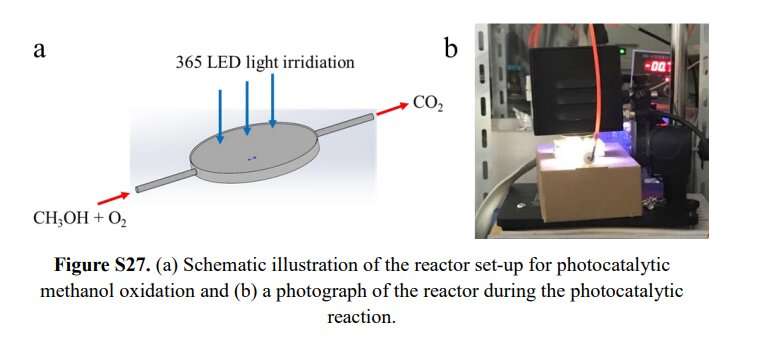Efficiency in photocatalysis found to be site-sensitive

Prof. Huang Weixin and Zhang Qun from University of Science and Technology of China (USTC) of the Chinese Academy of Sciences (CAS), together with domestic collaborators, probed into the photocatalytic oxidation of methanol on various anatase TiO2 nanocrystals. The results were published on Angewandte Chemie International Edition.
Semiconductor-based photocatalysis has attracted extensive attention since its discovery, owing to its environmentally friendly production of chemical fuel utilizing solar energy.
A photocatalytic reaction consists of light absorption and charge generation within photocatalysts, charge separation and migration to photocatalyst surfaces, and charge-participated reactions on photocatalyst surfaces. The last step, rate-limiting of photocatalytic reactions, involves an interfacial charge transfer process from photocatalyst surfaces to surface adsorbates and subsequent surface reactions. However, due to its complexity, there are much less studies on it.
To discover the underlying mechanism and the correlation with the photocatalytic efficiency, the researchers studied the photochemistry of CH3OH oxidation on various TiO2 nanocrystals, and the probe photocatalytic reaction for fundamental studies of complex photocatalytic reactions on oxide photocatalysts, with in situ and time-resolved characterizations and density functional theory calculations.
The results revealed that the surface site and corresponding adsorbed methanol species are demonstrated to influence the valence band bending, and these factors can thus determine the TiO2-to-CH3OH interfacial charge transfer process and subsequently the photocatalytic efficiency.
The finding was consistent with the previous study of Prof. Huang, justifying the feasibility of oxide model catalysts from single crystals to nanocrystals.
This study unveils the site sensitiveness of interfacial charge transfer, indicating surface structure engineering of photocatalysts to be an effective approach to maximize photocatalytic efficiencies.
More information: Cong Fu et al. Site Sensitivity of Interfacial Charge Transfer and Photocatalytic Efficiency in Photocatalysis: Methanol Oxidation on Anatase TiO 2 Nanocrystals, Angewandte Chemie International Edition (2020). DOI: 10.1002/anie.202014037
Journal information: Angewandte Chemie International Edition
Provided by Chinese Academy of Sciences


















